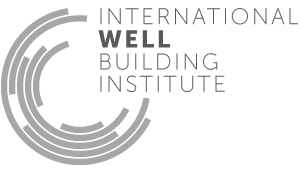Food environment
- 52 Mindful eating
- 53 Visual lighting design
- 54 Circadian lighting design
- 55 Electric light glare control
- 56 Solar glare control
- 57 Low-glare workstation design
- 58 Color quality
- 59 Surface design
- 60 Automated shading and dimming controls
- 61 Right to light
- 62 Daylight modeling
- 201 Food environment
- 202 Light at night
P1. Food environment
Eating habits and behavior are enabled, learned and reinforced through cues in our environment, as well as by our social surroundings. Any establishment where food is prepared or eaten should provide access to healthy foods and encourage mindful eating practices to help sustain healthy habits.
This feature requires the creation of communal environments where healthy eating habits are supported and inculcated.
Where food is not provided within the facility, at least one of the following is located within 0.8 km [0.5 mi] of the building, or free transportation is provided to one of the following:
Meals or catering provided by (or under contract with) the project owner include at least one option for each of the following criteria:
A designated communal eating area meets the following for certified spaces with 10 or more occupants.:

Applicability Matrix
| Core & Shell | Tenant Improvement | New Construction | |
|---|---|---|---|
| Part 1: Healthy Food Access | - | - | - |
| Part 1: Food Alternatives | - | O | O |
| Part 2: Communal Eating Area | - | - | - |
| Commercial Kitchen | Schools | Multifamily Residential | Restaurant | Retail | |
|---|---|---|---|---|---|
| Part 1: Healthy Food Access | - | O | O | - | - |
| Part 1: Food Alternatives | - | O | - | P | - |
| Part 2: Communal Eating Area | - | - | - | - | - |
Verification Methods Matrix
| Letters of Assurance | Annotated Documents | On-Site Checks | |
|---|---|---|---|
|
PART 1 (Design) Healthy Food Access |
|||
|
PART 1 (Protocol) Food Alternatives |
Operations Schedule |
| 201.1.a |
An option for meeting a prerequisite for LEED v4 for ND: Smart Location and Linkages is to locate the project within 0.5 mi walking distance of at least seven "use types", one of which could be a grocery with a produce section. |
| 201.1.b |
In LEED v4 for ND: Built Project, a project can receive one credit point if its geographic center is within 0.5 miles walking distance of an existing or planned farmers market open at least once weekly for at least five months annually. |
